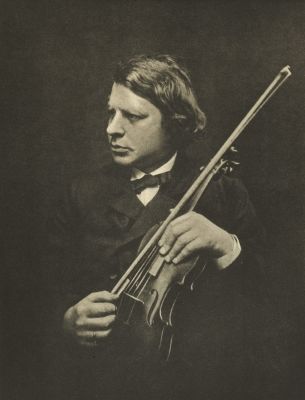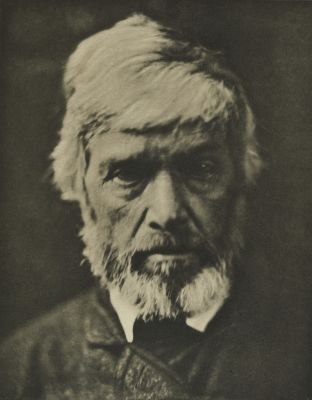
Title
The Asphalt Paver; New YorkArtist
Stieglitz, Alfred (American, 1864-1946)Key FigurePublication
Camera Work XLIDate
1913Process
PhotogravureAtelier
Manhattan Photogravure Company, NYImage Size
14.1 x 17.6 cm
The imgae depicts an asphalt paving operation. The thick pin of a paver’s chimney anchors the image, holding together the converging diagonals of an elevated railway and a graded road. Steam and smoke billow around the wheeled apparatus, smudging the surrounding forms and obscuring the special recession. A boy, whose form nearly merges with the oven, stoops to fuel it with wood transported with the aid of a small handcart. The fuel will keep the asphalt hot and properly viscous for spreading. Behind and to the right, stands a vague vertical form. It could be a man in natty attire, rendered ghostly by having moved during the exposure, or it could be a street light. The ambiguity is unsettling. The picture mulls over the alchemy of modern life. The bare trees stand like the skeletal remains of an arboreal past, through which capital, with its iron and tire, asphalt and smoke, advances to accelerate people and property. Some trees will be spared to retain pockets of greenery, while others will be cleared to accommodate development. The contrast between the stark and erect smokestack and the obscure, stooping figure suggests the subordination of workers to industrial agency. Modernity appears as a turbulent transformation of matter, sustained by new burdens on human labor. All this transpires in an atmosphere of expenditure. The mists and fogs of the English fens have given way to the workaday vapors of the city street. [1]
Reproduced / Exhibited
Greenough, Sarah, and Alfred Stieglitz. Alfred Stieglitz: The Key Set : the Alfred Stieglitz Collection of Photographs. Washington, D.C: National Gallery of Art, 2002. item 74
Homer, William I, Catherine Johnson, and Alfred Stieglitz. Stieglitz and the Photo-Secession, 1902. London: Penguin Putnam, 2002.
References
[1] Kelsey Robin. Photography and the Art of Chance. Belknap Press of Harvard University Press 2015 p. 150







